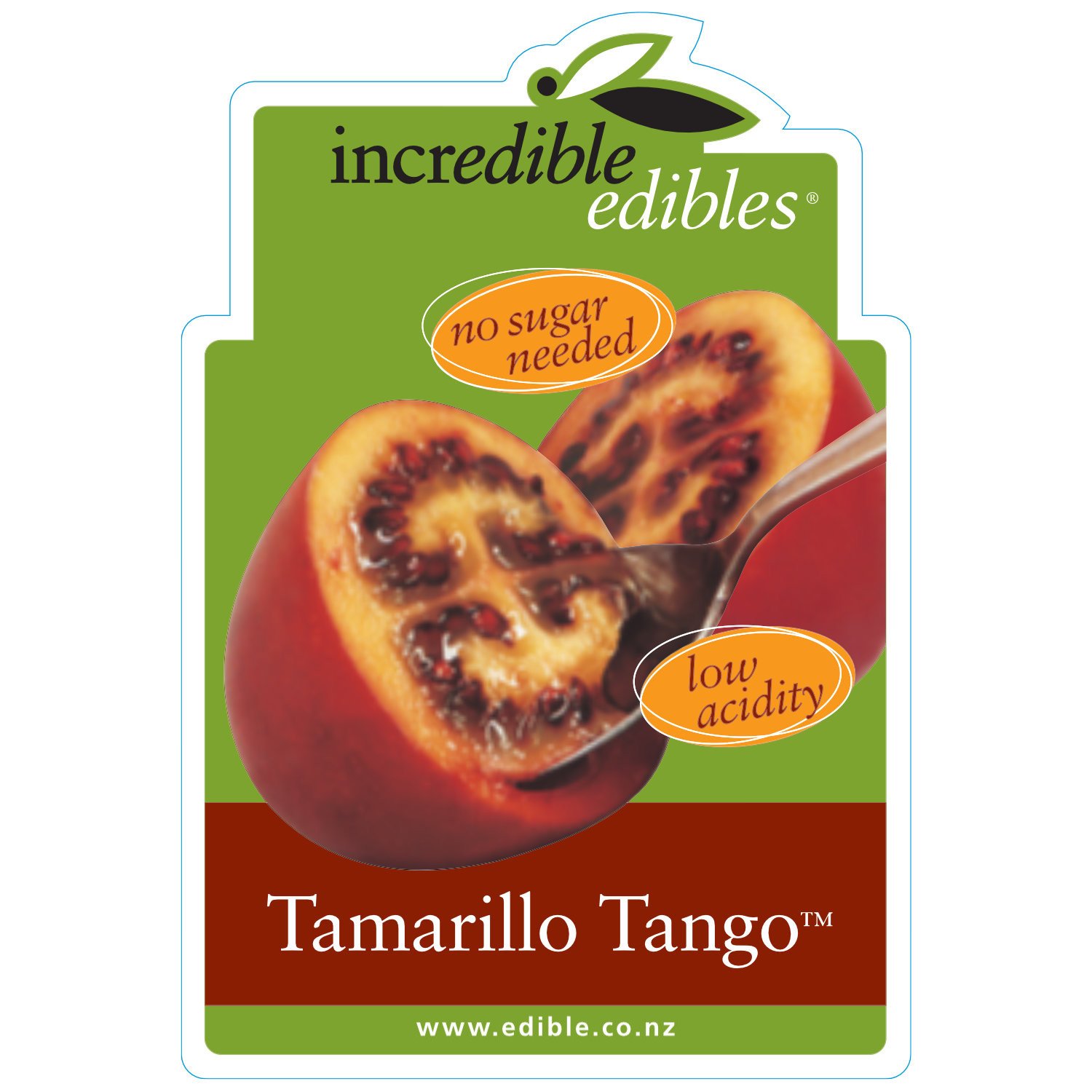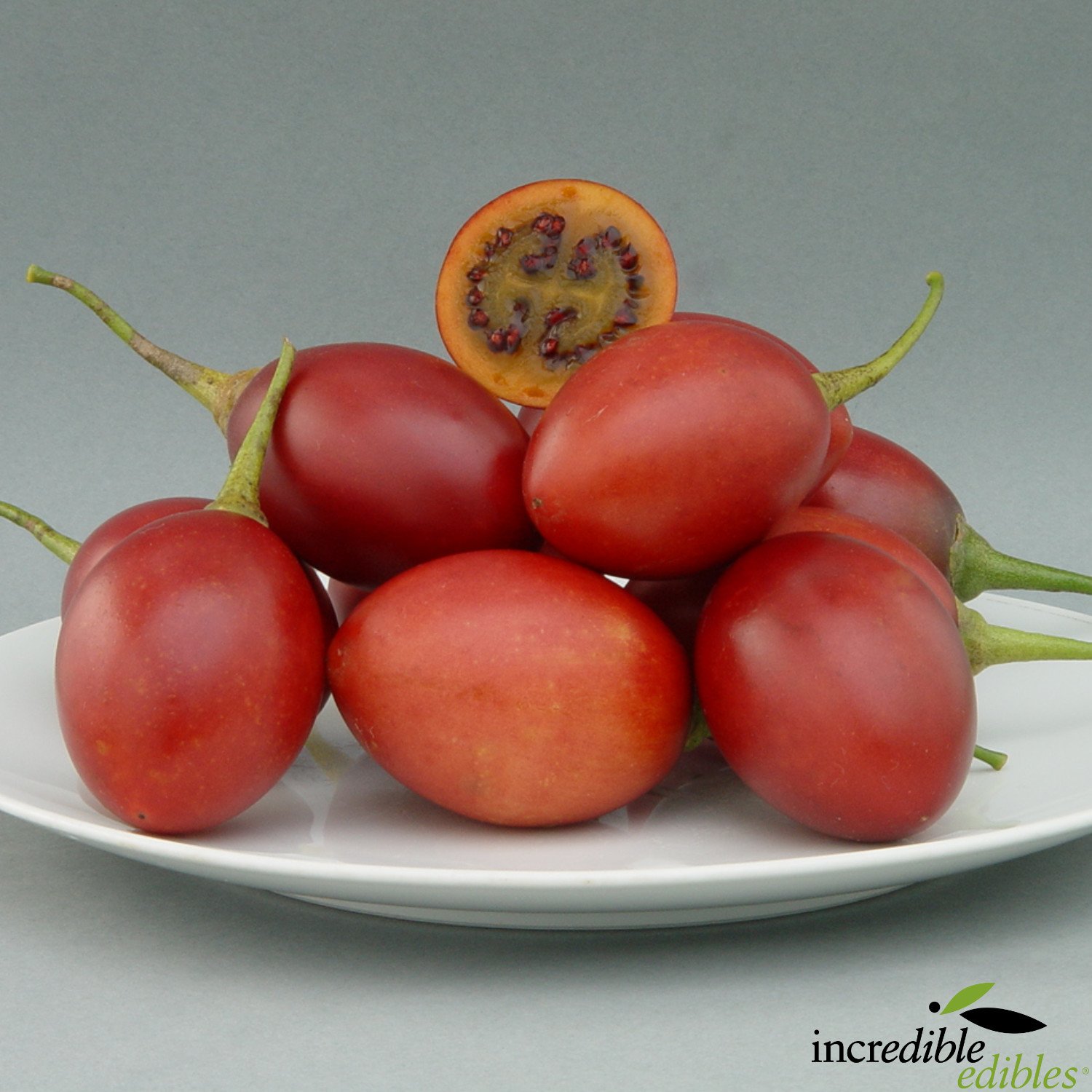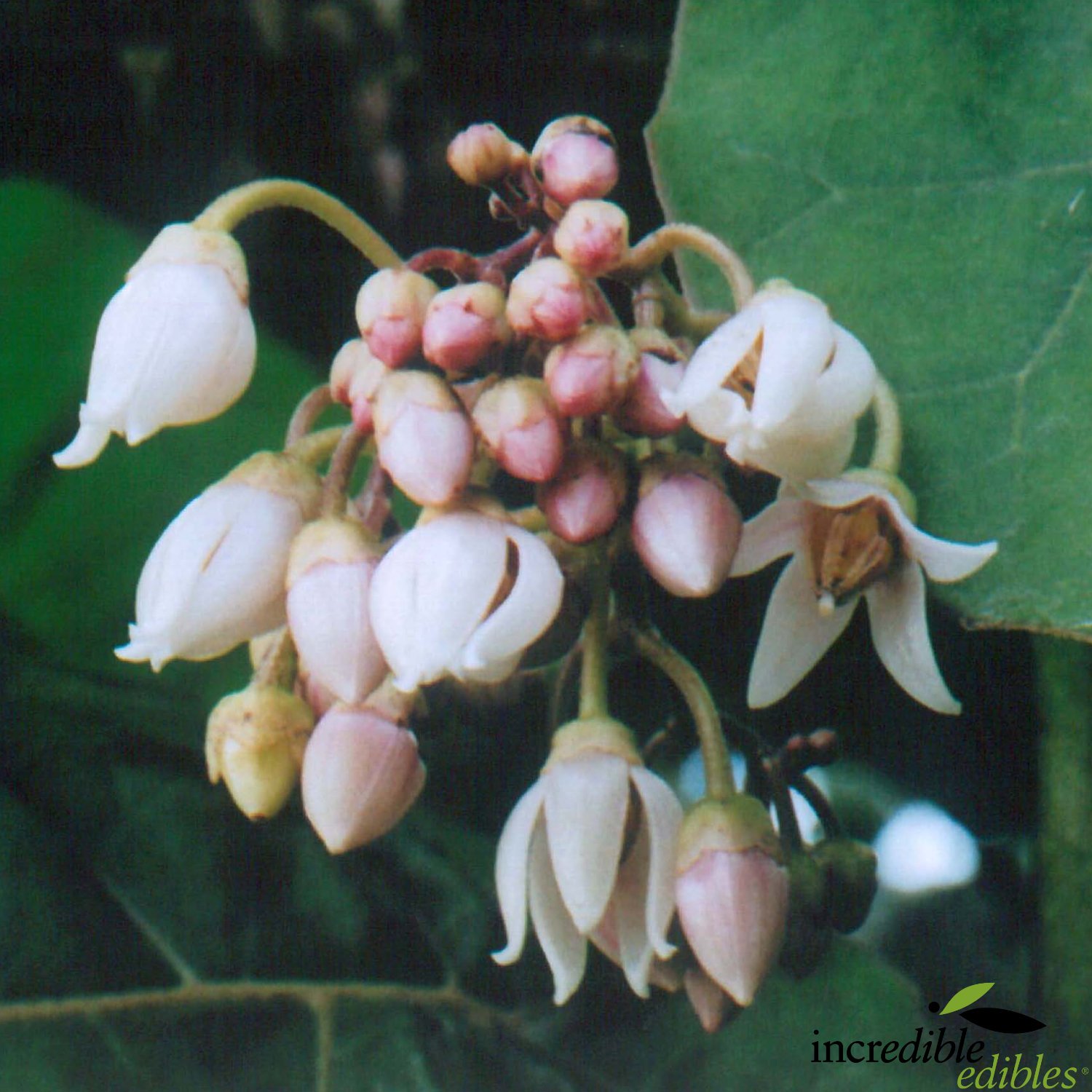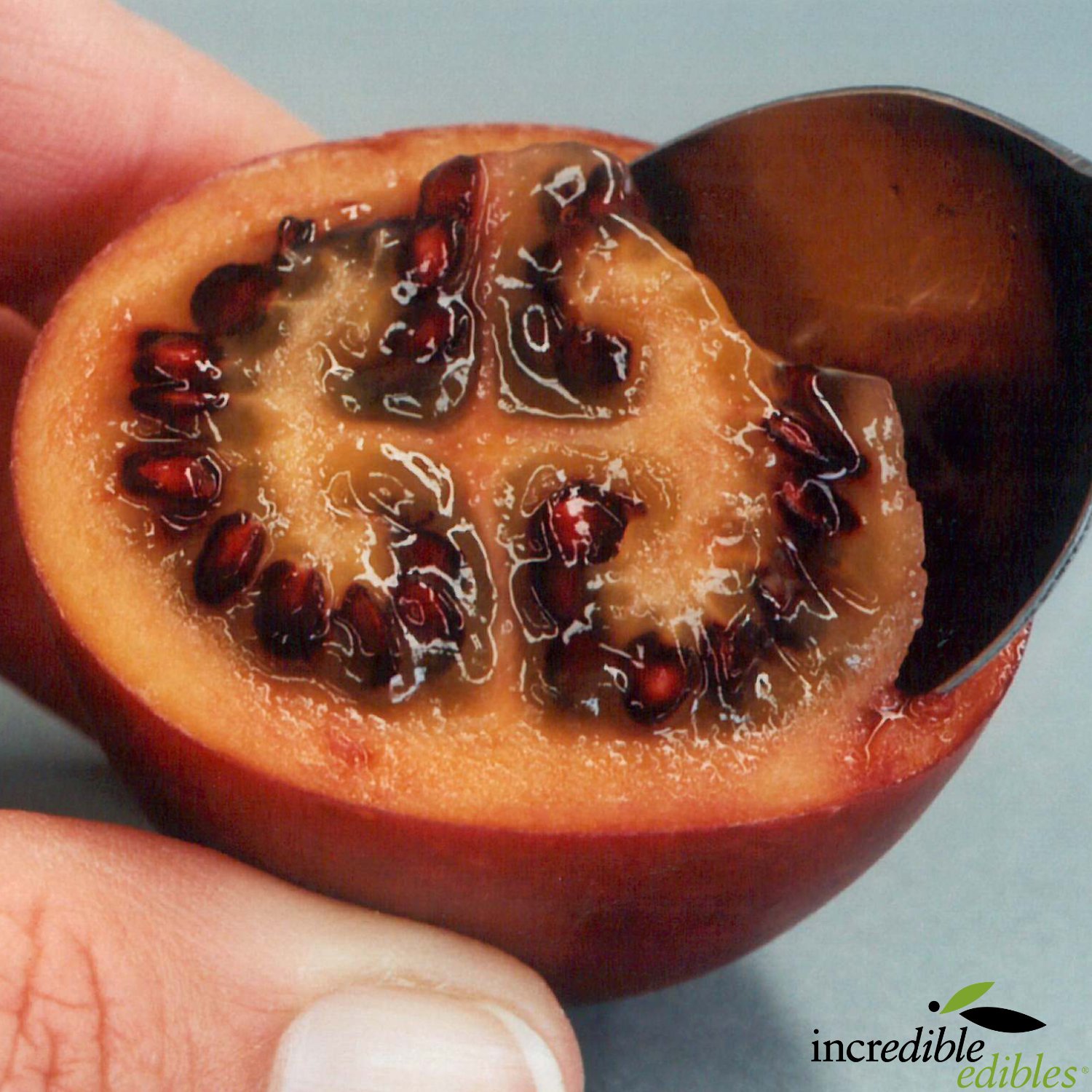 Image 1 of 7
Image 1 of 7

 Image 2 of 7
Image 2 of 7

 Image 3 of 7
Image 3 of 7

 Image 4 of 7
Image 4 of 7

 Image 5 of 7
Image 5 of 7

 Image 6 of 7
Image 6 of 7

 Image 7 of 7
Image 7 of 7








Tamarillo Tango™
Tamarillo Tango™ has clusters of pink fragrant flowers followed by medium-sized red/orange fruit. Very sweet with low acidity. Harvest is in autumn - early winter.
Pruning, once your plant reaches 1 metre tall, take the tip out to encourage branching and stop the plant from growing too tall so you cannot reach the fruit. Frosts will naturally prune your tree. After the frosts have passed, remove old and dead wood. In areas with no frosts, you must manually prune back growth to prevent overcrowding. Always remember fruit is formed on the new spring growth. Therefore a hard prune will maintain the desired shape, size and maximise next season's fruit.
Apply three applications of low nitrogen NPK fertiliser during the growing season. One before pruning, the second one month later and the third in February to help fruit development.
Tamarillos are susceptible to aphids and whitefly, especially when under stress. Spray with an organic insecticide when these insects are present.
Produced and Marketed by Tharfield Nursery Ltd in association with Plant & Food Research. Tamarillo Tango™ (‘Cyphomandra betacea Sweeten’) is protected under the New Zealand Plant Variety Act 1987.
Cyphomandra betacea ‘Sweeten’
Tamarillo Tango™ has clusters of pink fragrant flowers followed by medium-sized red/orange fruit. Very sweet with low acidity. Harvest is in autumn - early winter.
Pruning, once your plant reaches 1 metre tall, take the tip out to encourage branching and stop the plant from growing too tall so you cannot reach the fruit. Frosts will naturally prune your tree. After the frosts have passed, remove old and dead wood. In areas with no frosts, you must manually prune back growth to prevent overcrowding. Always remember fruit is formed on the new spring growth. Therefore a hard prune will maintain the desired shape, size and maximise next season's fruit.
Apply three applications of low nitrogen NPK fertiliser during the growing season. One before pruning, the second one month later and the third in February to help fruit development.
Tamarillos are susceptible to aphids and whitefly, especially when under stress. Spray with an organic insecticide when these insects are present.
Produced and Marketed by Tharfield Nursery Ltd in association with Plant & Food Research. Tamarillo Tango™ (‘Cyphomandra betacea Sweeten’) is protected under the New Zealand Plant Variety Act 1987.
Cyphomandra betacea ‘Sweeten’

